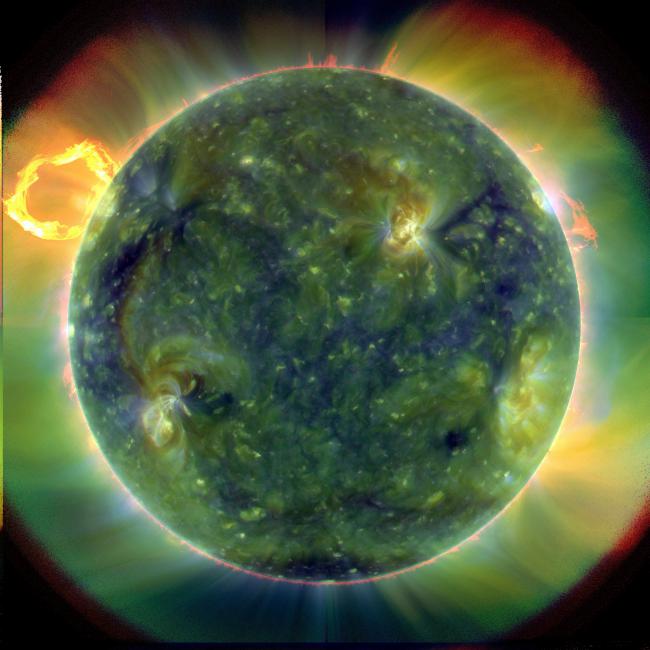
Cambridge, MA
NASA's recently launched Solar Dynamics Observatory, or SDO, is returning early images that confirm an unprecedented new capability for scientists to better understand our sun's dynamic processes. These solar activities affect everything on Earth.
Some of the images from the spacecraft show never-before-seen detail of material streaming outward and away from sunspots. Others show extreme close-ups of activity on the sun's surface. The spacecraft also has made the first high-resolution measurements of solar flares in a broad range of extreme ultraviolet wavelengths.
"These initial images show a dynamic sun that I had never seen in more than 40 years of solar research," said Richard Fisher, director of the Heliophysics Division at NASA Headquarters in Washington. "SDO will change our understanding of the sun and its processes, which affect our lives and society. This mission will have a huge impact on science, similar to the impact of the Hubble Space Telescope on modern astrophysics."
Launched on Feb. 11, 2010, SDO is the most advanced spacecraft ever designed to study the sun. During its five-year mission, it will examine the sun's magnetic field and also provide a better understanding of the role the sun plays in Earth's atmospheric chemistry and climate.
The observatory carries three state-of the-art instruments for conducting solar research: the Atmospheric Imaging Assembly (AIA), the Extreme Ultraviolet Variability Experiment (EVE), and the Helioseismic and Magnetic Imager (HMI). These three instruments observe the sun simultaneously, performing the entire range of measurements necessary to understand solar variations.
The Smithsonian Astrophysical Observatory (SAO) is a major partner in the AIA, which is a group of four telescopes that photograph the sun in 10 different wavelength bands, or colors, once every 10 seconds. Its images will help astronomers link changes in the sun's surface to interior changes. SAO built the four telescope assemblies and participates as a full partner in the scientific analysis activities.
"Everything about the AIA images is cleaner and better than anything we've had before. The mirrors are better, the cameras are better and the amount of data available is better. It all combines to give us a view of the corona that we've never had before," said SAO astrophysicist Leon Golub, a co-investigator on the AIA.
SDO is the first mission of NASA's Living with a Star Program, or LWS, and the crown jewel in a fleet of NASA missions that study our sun and space environment. The goal of LWS is to develop the scientific understanding necessary to address those aspects of the connected sun-Earth system that directly affect our lives and society.
This press release has been adapted from text issued by NASA.
Headquartered in Cambridge, Mass., the Harvard-Smithsonian Center for Astrophysics (CfA) is a joint collaboration between the Smithsonian Astrophysical Observatory and the Harvard College Observatory. CfA scientists, organized into six research divisions, study the origin, evolution and ultimate fate of the universe.
David A. Aguilar
Director of Public Affairs
Harvard-Smithsonian Center for Astrophysics
617-495-7462
daguilar@cfa.harvard.edu
Christine Pulliam
Public Affairs Specialist
Harvard-Smithsonian Center for Astrophysics
617-495-7463
cpulliam@cfa.harvard.edu